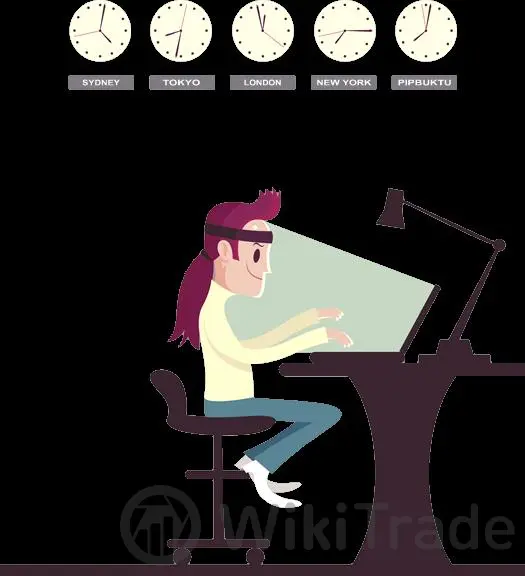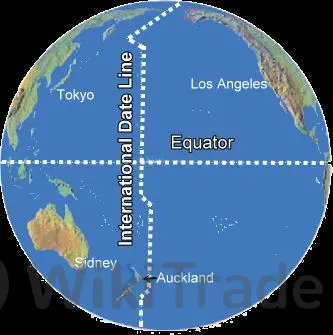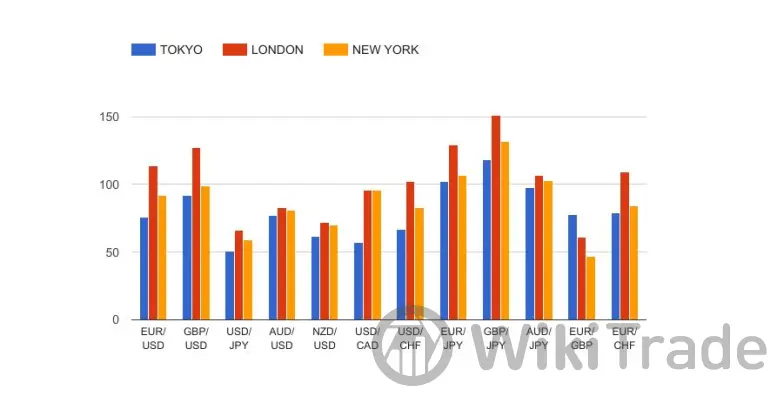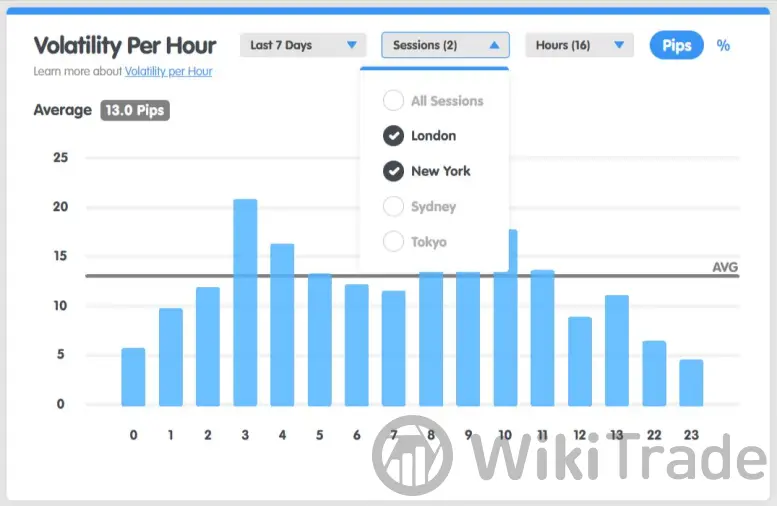Forex Trading Sessions
Abstract: Get ready to unlock the secrets of the forex market’s hidden rhythm.
Get ready to unlock the secrets of the forex markets hidden rhythm.
Now that you know what forex is, why you should trade it, and who makes up the forex market, its about time you learned when you can trade.
If you‘ve ever wondered why the market seems to dance to a different beat throughout the day, or why some hours are buzzing with activity while others feel like a ghost town, you’re about to get your answer.
Its time to learn about the different forex trading sessions.

Yes, it is true that the forex market is open 24 hours a day, but that doesn‘t mean it’s always active the entire day.
You can make money trading when the market moves up, and you can even make money when the market moves down.
BUT you will have a very difficult time trying to make money when the market doesnt move at all.
And believe us, there will be times when the market is as still as the victims of Medusa.

Forex Market Hours

Before looking at the best times to trade, we must look at what a 24-hour day in the forex world looks like.
The forex market can be broken up into four major trading sessions: the Sydney session, the Tokyo session, the London session, and Trumps favorite time to tweet (before he started his own social media company, the New York session.
Historically, the forex market has three peak trading sessions.
Traders often focus on one of the three trading periods, rather than attempt to trade the markets 24 hours per day.
This is known as the “forex 3-session system”.
These sessions consist of the Asian, European, and North American sessions, which are also called Tokyo, London, and New York sessions.
Some traders prefer to differentiate sessions by names of the continent, other traders prefer to use the names of the cities.
(We prefer using city names but continents are cool also.)
Each session has different levels of volatility and liquidity. Understanding these patterns will help you to choose the best time to trade specific currency pairs.
International Date Line
The International Date Line (IDL) is an imaginary line that runs from the North Pole to the South Pole and demarcates the change of one calendar day to the next.
It roughly follows the 180° line of longitude but deviates in certain areas to avoid splitting countries and island groups.

Since Wellington, New Zealand is a major financial center, the forex markets open there on Monday morning, while it is still Sunday in most of the world.
Even though trading starts in Wellington, it‘s still called the Sydney session. Makes no sense but we don’t make the rules.
Until Friday, there is no time during the week when the market formally closes, although there is a brief lull in activity between about 19:00 and 22:00 GMT when most American traders have gone home and most Kiwi and Aussie traders are getting ready for work.
Other than the weekends, there are just two public holidays when the entire forex market is typically closed, Christmas and New Years Day.
Below are tables of the open and close times for each session:
| Local Time | EST | UTC |
| Sydney Open – 7:00 AMSydney Close – 4:00 PM | 4:00 PM1:00 AM | 9:00 PM6:00 AM |
| Tokyo Open – 9:00 AMTokyo Close – 6:00 PM | 7:00 PM4:00 AM | 12:00 AM9:00 AM |
| London Open – 8:00 AMLondon Close – 5:00 PM | 2:00 AM11:00 AM | 7:00 AM4:00 PM |
| New York Open – 8:00 AMNew York Close – 5:00 PM | 8:00 AM5:00 PM | 1:00 PM10:00 PM |
Actual open and close times are based on local business hours, with most business hours starting somewhere between 7-9 AM local time.
Daylight Savings Time
Open and close times will also vary during the months of October/November and March/April as some countries (like the United States, United Kingdom, and Australia) shift to/from daylight savings time (DST).
Daylight Saving Time (DST) is the practice of setting the clocks forward one hour from standard time during the warmer months, and back again in the fall, to make better use of natural daylight.
The idea behind DST is to make better use of daylight hours. By shifting an hour of daylight from the morning to the evening, people can enjoy more sunlight after work and school, potentially reducing energy consumption for lighting and heating.
The day of the month that a country shifts to/from DST also varies, confusing us even more.
And not all places observe Daylight Saving Time. Some states and countries have opted out or are considering changes to their policies.
For example, Japan doesnt observe daylight savings, so thank you Japan for keeping it easy!
Now, youre probably looking at the Sydney Open and wondering why it shifts two hours in the Eastern time zone.
You‘d think that Sydney’s Open would only move one hour when the U.S. adjusts for standard time, but remember that when the U.S. shifts one hour back, Sydney actually moves forward by one hour (seasons are opposite in Australia).
Keep this in mind if you ever plan to trade during that time period.
Dealing with DST is a pain but thats what happens when a market trades around the clock!
It‘s important to remember that the forex market’s opening hours will change in March, April, October, and November, as countries move to daylight savings on different days.
Forex Trading Session Overlaps
Also take notice that in between each forex trading session, there is a period of time where two sessions are open at the same time.
For example, during the summer, from 3:00-4:00 AM ET, the Tokyo session and London session overlap
And during both summer and winter from 8:00 AM-12:00 PM ET, the London session and the New York session overlap.
Naturally, these are the busiest times during the trading day because there is more volume when two markets are open at the same time.
This makes sense because, during those times, all the market participants are wheelin‘ and dealin’, which means that more money is transferring hands.
Forex Trading Session Volatility
Now lets take a look at the average pip movement of the major currency pairs during each forex trading session.
| Pair | Tokyo | London | New York |
| EUR/USD | 76 | 114 | 92 |
| GBP/USD | 92 | 127 | 99 |
| USD/JPY | 51 | 66 | 59 |
| AUD/USD | 77 | 83 | 81 |
| NZD/USD | 62 | 72 | 70 |
| USD/CAD | 57 | 96 | 96 |
| USD/CHF | 67 | 102 | 83 |
| EUR/JPY | 102 | 129 | 107 |
| GBP/JPY | 118 | 151 | 132 |
| AUD/JPY | 98 | 107 | 103 |
| EUR/GBP | 78 | 61 | 47 |
| EUR/CHF | 79 | 109 | 84 |
Notice how some currency pairs have much larger pip movements than others.

To see the average pip movement for specific currency pairs in real-time, you can use our MarketMilk™ tool.
For example, heres the volatility per hour for EUR/USD filtered by London and NY sessions:





Top News
 WikiTrade
WikiTrade WikiTrade
WikiTrade WikiTrade
WikiTrade WikiTrade
WikiTrade WikiTrade
WikiTrade WikiTrade
WikiTrade WikiTrade
WikiTrade WikiTrade
WikiTrade WikiTrade
WikiTrade WikiTrade
WikiTrade


